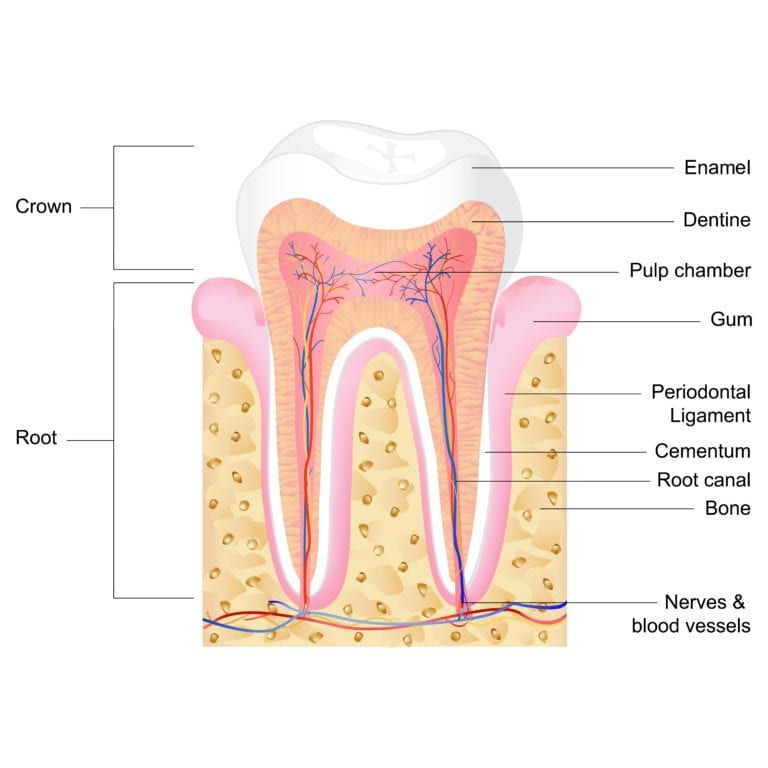The Anatomy of Your Teeth

A set of strong and healthy teeth allow us to enjoy our favorite foods without major complications. We know that oral hygiene has always been an issue of great importance as we can protect our teeth from all the external aggressions they face every day.
But, do you know a tooth from the inside?
It is essential because it allows us to appreciate everything we can accomplish daily because of their presence.
A tooth is composed of:
Enamel
It is responsible for the shine of our teeth and, although it may seem a lie, it is the hardest mineral tissue in the body. Its main function is to protect our teeth from external aggressions, and only a small part of the composition is organic, that is, for the most part, it has no life. That is why, if you have incipient caries, you will not notice the pain. And that is also why when caries affects only the enamel; it is difficult for you to see it because it will have a whitish appearance and not the black one that we normally associate with decay.
Dentine
Unlike enamel that only covers the crown, dentine covers the entire tooth. It is the substance responsible for the color of our teeth that, contrary to what may seem, are not whites. It is softer than the enamel, so the early detection of caries is essential. If it affects the dentine, it will advance rapidly to the pulp. If you see a yellow, brown or black spot on a tooth, it is a sign that you have tooth decay and that it is already attacking the dentin. Inevitably, you begin to notice pain or tooth sensitivity because the dentin is in direct contact with the most sensitive part of the tooth: the pulp.
Pulp
It is the center of the tooth or its heart. It lodges nervous tissues and blood vessels. If caries already affects the pulp, you will have a lot of pain and, also, the body will begin to fight against the infection in the form of phlegmon (inflammation) or abscesses at the tip of the root to release the pus. Caries that has gone so far does not have a solution that does not affect, to a greater or lesser extent, the entire tooth. In the most serious cases, we have to practice endodontics to reconstruct the piece later.
Gum
It is responsible for covering the root of the tooth and also works as a barrier. If it were not for the gum, all the remains and bacteria would travel without control towards the root. Without the gums, the teeth would be left without its natural subjection. In fact, dental mobility can be a symptom that our gums are affected by gingivitis or periodontitis.
Now, you know that teeth are not only what you see on the outside. Under the gums, there is a lot that is perfectly created to act in harmony and thus, allow us to lead a full life.

Recent Comments